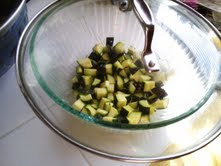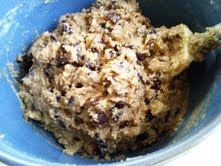 |
| IN THE GARDEN |
One of the reasons I like to garden is that it is rewarding to see the little seeds you plant begin to sprout, grow and hopefully flourish.
I support the idea of eating local foods and try to buy most of my food from local growers at farmer's markets. You can't get much more local than what grows in your own backyard garden.
I support organic and I favor organic gardening methods. Growing my own food has given me a much deeper appreciation for those that produce food using traditional non-industrial methods.
I support non-GMO seeds and seek out companies that produce non-GMO seeds. Go to this site and click on the link that will take you to the Council For Responsible Genetics where you will find a list of companies that have signed a safe seed pledge.
http://www.garden-of-eatin.com/how-to-avoid-monsanto/
One thing I am certain of - is that you cannot beat a home produced vegetable for taste. Even the fairly fresh farmer's market produce that I frequently buy cannot stand up to a home grown vegetable for taste.
When you grow your own vegetables you know where those vegetables have come from and what they have been exposed to.
When you grow your own vegetables you can choose the most amazing varieties. At first it may be hard to contain yourself. I enthusiastically endorse trying LOTS of varieties. Two of my garden favorites are "painted serpent cucumber" and "moon and stars watermelon." I am a sucker for interesting names and especially varieties with a history.
Heirloom variety seeds are particularly appealing. By planting heirloom vegetables you support plant diversity and help preserve seeds that would otherwise be lost to the all too prevalent mono-culture agricultural methods. I plant and grow as many heirloom varieties as I can. Besides fulfilling my criteria for having interesting names, heirloom variety vegetables taste different because they are not bred for transport - they are preserved and grown for their taste and uniqueness.
With a few exceptions, the last thing you might want to think about is ditching the idea of planting nice neat rows of veggies - and this will bother neat-niks - but I gave up planting many of my vegetables in nice neat rows several years ago. What I learned over years of observing the habits of plants is that they are social creatures. They actually like to cuddle with each other. I think it is fun to see the surprising ways the plants in my garden, and nature for that matter, grow and mingle together. That is one part of gardening I would not want to miss.
Gardens are meant to be shared. They are a fun place to bring people of all ages.
Have fun in your incredible edible garden!













